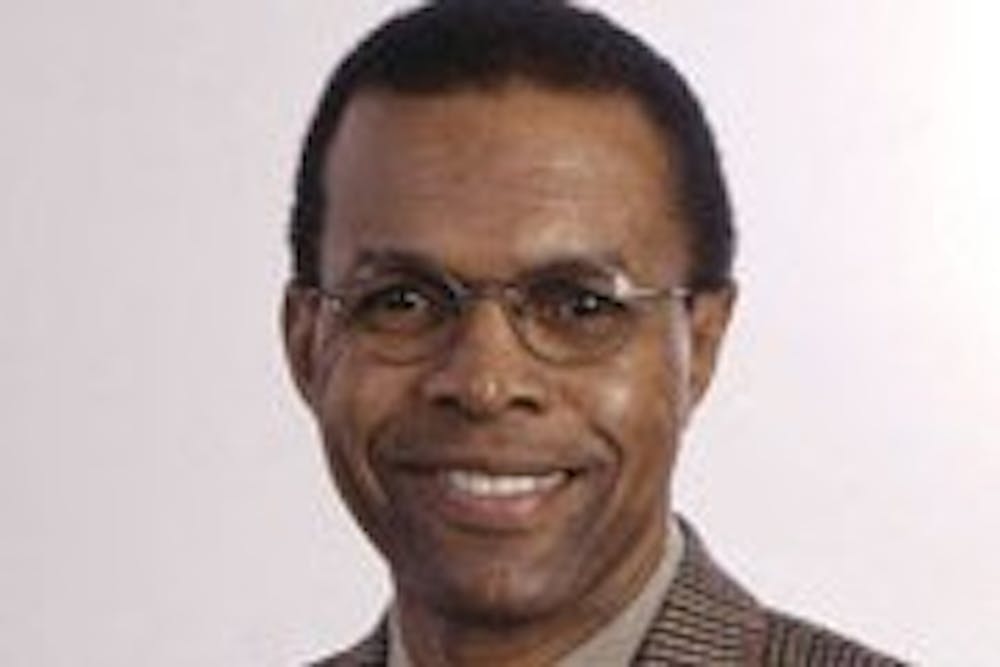When people think of collegiate athletics directors, they tend to think of people who are best known by that role. In 1979, though, Penn considered legendary NFL running back Gale Sayers in its search for someone to fill the position.
After former Penn Athletics Director Andy Geiger resigned in late 1978 to accept the same job at Stanford, Penn was left in a precarious position. The ensuing search process led Penn to an interview with Sayers, a dismissal of the possibility of the job by Sayers, and then a subsequent interview several months later.
In January 1979, Provost Vartan Gregorian entered Penn with the issue of who the next Athletics Director would be. Another issue he felt was worth taking on was the University’s previous problems regarding affirmative action. For that reason, it was eventually revealed that Gregorian was intent on hiring a black AD.
This put Charles Harris, a 29-year-old University of Michigan Assistant Athletics Director, and Sayers, who was then the Athletics Director at Southern Illinois University (SIU) Carbondale, toward the top of the list. In total, the first search committee, which included former Penn baseball and soccer head coach Bob Seddon, former Penn tennis and squash coach Al Molloy, and horse-racing heavyweight Bob Levy, interviewed 16 out of the over 100 applicants in the first two months of 1979.
When Sayers interviewed, he had a tall task to live up to. He had to establish himself as someone who was more than the youngest inductee into the Pro Football Hall of Fame and someone who still remains one of the greatest running backs in NFL history. In attempting to do so, he made it seem as if he was already familiar with Penn.
“Gale Sayers came in, and it was like he lived at Penn for 20 years,” Seddon said. “He had been versed very well, and he knew everything about everywhere.”
While in many cases this strategy would seem to gain favor with a university committee, it actually had the opposite effect.
“It hurt him because it seemed phony,” Seddon said.
With that in mind, Sayers was found by many on the panel to be an unattractive candidate, with Charles Harris and football coach Harry Gamble being reported as the frontrunners. In response, Sayers made it seem as if he wasn’t interested in the job in the first place.
“I said at the beginning that I didn’t think I was in the running for the job,” Sayers said on February 13, 1979. “I don’t think I am now either. If I’m considered, fine. If not, that’s fine, too. Like I said, I’m not looking for a job.”
Previously, Sayers had also said that he did not apply for the job, and that he did not know if he would accept it if it were offered to him. This didn’t stop him, though, from interviewing for the job a second time.
Shortly after the first committee had conducted interviews with the potential candidates, it was disbanded by Gregorian. According to Seddon, the reasoning was quite simple.
“Our committee was eliminated. They said there was ‘leaking,’” he said.
This was backed up by a letter that Gregorian issued at the time, which placed the blame on “serious breaches of confidentiality by some members of your committee,” with said breaches “embarass[ing] candidates and le[a]d[ing] to public discussion of the merits and qualifications of candidates.”
As a second committee started up in late March of 1979, they had to re-evaluate their predecessors' choices, which led to additional interviews of candidates. So, in late April of that same year, the committee interviewed Gale Sayers. It appeared that he must’ve done a better job of impressing panel members, as he was reported to be among the four candidates that were recommended to Gregorian when all was said and done.
From the list of four, Gregorian ended up offering the job to Columbia AD Al Paul, who initially entered the search process as an adviser to the committee, but impressed the group so much that he became a finalist for the role. After he declined, the position was offered to Charles Harris, who accepted.
In doing so, Harris became the youngest person to be named Athletics Director at an Ivy League university and the first ever African-American to serve in the role in the Ivy League. He would later take the Athletics Director job at Arizona State in 1985, while Sayers resigned from SIU Carbondale in 1981.
Gregorian got his wish that he set out for early in the process, while Penn was shortly intertwined with the legend of Gale Sayers, a figure who stands tall in the history of football and who almost did so at Penn.









